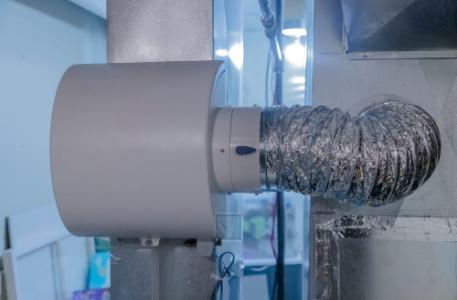
The Pros and Cons of 3 Types of Integrated, Whole-House Humidifiers
If you live in an arid climate or encounter seasonal winter dry spells, you may be frustrated by sinus problems, itchy skin, or cracks in your wood furniture and flooring. There are numerous ways to add more humidity to your home, but sometimes a whole-house humidifier integrated into your air ducts offers the best solution.
Why would you want a whole-house humidifier?
Small, portable humidifiers often have one-gallon water chambers. That might be adequate for a single room, assuming the moisture you add to the air stays within that room.
But let’s assume your home is heated and cooled with a forced-air HVAC system. In that case, the air flows through the ducts and spreads throughout your home whenever the fan runs.
As a result, you won’t be able to raise the relative humidity significantly in a single room unless it’s completely sealed from the rest of your home. And what about your other rooms? Do you want to boost the humidity in them too?
A whole-house humidifier-integrated into your ductwork is often the most effective way to tackle too-low humidity in your home and it eliminates the need to refill . But even if you’re sold on installing one, you still face several decisions.
All whole house humidifiers require a water line and a power source. They’re typically installed near your furnace and require cuts into your ductwork, although the units are integrated differently. Here are the pros and cons of three major types of systems.
1. Bypass Humidifiers
Every humidifier turns water into vapor, which is then dissipated throughout a home. A bypass humidifier takes the most passive approach, relying heavily on the hot air flowing through an HVAC system to distribute moisture.
Typically, a bypass unit is mounted onto a cutout opening on the furnace’s supply side so hot air will blow into the humidifier. A flexible six-inch duct is then attached to the other side of the humidifier flowing back to the main duct. This way, some hot air is diverted (or bypassed) into the humidifier before returning to the central ductwork.
Inside a bypass humidifier, water flows over a wicking, evaporative filter—either a drum style (shaped like a drum) or a flow-through model (shaped like a flat panel).
The primary advantage of the drum style is that it doesn’t use a drain, which means all the water is distributed into the home. However, the standing water in the tray is a perfect environment for mold growth, so it takes more work to keep these units clean.
In contrast, a bypass humidifier that uses a flow-through filter wastes more water. Owners must replace the evaporative filter annually and clean the drain line.
Bypass humidifiers are the least expensive to purchase and install and are virtually silent when operating.
2. Powered Humidifiers
Whereas bypass humidifiers rely on the furnace fan to distribute vaporized air, powered humidifiers have a built-in fan that pushes moisture into the ducts, helping propel it throughout your home.
Powered humidifiers are larger than bypass units but don’t require additional ductwork and only need one cutout. Typically, a flow-through evaporative filter is positioned in front of the fan, which must be replaced annually.
They are more expensive to operate than bypass humidifiers since they use more water and electricity. And because a powered humidifier includes a fan, it will generate more noise than a bypass unit.
3. Steam Humidifiers
A steam whole-house humidifier is entirely different from a bypass or powered unit in that it operates more like an independent home appliance than a furnace accessory.
Electric probes boil water inside a steam unit’s canister, and then the steam is injected into the air ducts via a thick rubber hose. Steam units can be mounted on a wall near the furnace, but they only require a small cutout for the hose.
Steam humidifiers have substantially more parts than evaporative-style whole-house humidifiers, which adds to their cost. Plus, installation is more complex because they must be wired into a standalone breaker in the circuit box.
Annual maintenance is necessary to keep steam units in good operating condition, although they can be less susceptible to mold growth. They are more expensive to operate but may be the only viable solution for larger homes.
A steam unit will produce some noise while operating, but this may not be a problem, depending on its location.
Installing a Whole-House Humidifier
Since whole-house humidifiers require water connections, electrical connections, and cuts into your ductwork, most DIYers don’t attempt to install them. Plus, manufacturers’ warranties may hinge on professional installation.
The best advice is to research options, understand different models’ features, and talk to more than one installer. That way, you’ll get a helpful mixture of opinions and more competitive pricing.
